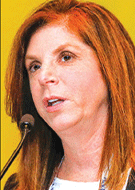Radiologists Can Lead Shift to Value-Based Care
Specialty needs to define and improve care value for patients

Radiologists have an opportunity to lead the health care transformation to value-based care and shift the focus from simply reducing monetary costs to making meaningful changes that will deliver quality outcomes for the patient.
“It’s important that radiology leads beyond imaging because we are at the center of all health care, and we’re able to communicate and collaborate with all of the other specialties,” said Pamela T. Johnson, MD, professor of radiology, oncology and urology at Johns Hopkins University (JHU).
Dr. Johnson is also founder and director of the High Value Practice Academic Alliance (HVPAA), an organization established in 2016 with the intent to elevate the care transformation effort and ensure the quality, safety and effectiveness of the high-value model for health care delivery.
According to Dr. Johnson, one issue with determining radiology value is the lack of good quality measures to assess interpretations.
“We don’t compare interpretive performance. We don’t look at how interpretations guide management in any kind of robust ways,” Dr. Johnson said. “It’s something we need to be working on because we have payers and policy makers thinking that they’re determining quality, when we’re the ones that really know what quality imaging is.”
She said it is important for radiologists to protect their specialty from the effects of allowing outside agencies to determine the necessity and value of the services and care they provide.
Preventing Overuse of Imaging is Key
Citing a recent study, Dr. Johnson said, “Of the bills that patients struggle with, the biggest contributors are emergency room visits, hospitalization, dental care and radiology, so we need to refine overuse. At the same time, ER visits and hospitalizations have a much higher cost and risk than an imaging test, and we can use imaging to protect patients from using those resources.”
In addition, radiologists may take an active role in reducing unnecessary admissions through more careful use of reporting terminology.
“We talk to a lot of referring physicians, and we find that our terminology often influences decisions in care,” she said. “We need to come up with more stringent clinical guidelines. We can’t just look at imaging and lab values — we also have to look at the clinical picture.”
At JHU, Dr. Johnson and her colleagues use various means to identify overuse with a wide range of interventions including clinical decision support, education, feedback reports, collaboration and consensus. She stressed that all are essential elements to the process and allow for value assessment beyond imaging utilization.
Emphasizing the importance of analyzing statistics and mapping out benchmarks for positive exam rates, Dr. Johnson said that large scale transformation is labor intensive, and there is a need for physicians to have protected time and institutional resources to dedicate to the effort.
The HVPAA includes 300 mission-driven physicians who gather annually to share their work so other institutions may benefit from it.
“We have learned from all of these HVPAA members about labs and admissions and pathways and things we can do to improve care value for our patients. “We feel very strongly about outcomes and evidence-based practice, and we want to make sure physicians are the ones defining value,” Dr. Johnson said. “Sooner or later, the patients are going to lose trust if they keep seeing media stories about costs and waste, wondering why doctors aren’t doing anything. It’s important that we actually demonstrate that we are.”